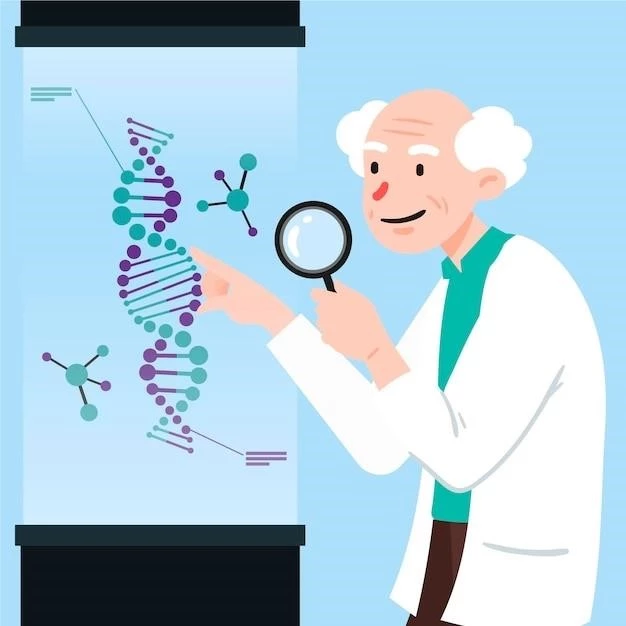Causes of Chromosome 10p Terminal Deletion Syndrome
The cause of Chromosome 10p Terminal Deletion Syndrome is primarily attributed to the deletion
of genetic material on the short arm (p) of chromosome 10. This deletion can result from
random genetic mutations or can be inherited from a parent.
Genetic Mutation Explanation
The genetic mutation leading to Chromosome 10p Terminal Deletion Syndrome involves the loss of genetic material from the short arm of chromosome 10. This deletion disrupts normal gene function, contributing to the development of the syndrome’s characteristic features and associated health outcomes.
Inheritance Patterns
The inheritance pattern of Chromosome 10p Terminal Deletion Syndrome can vary. In some cases, the deletion occurs sporadically due to a random mutation in an individual’s genetic material. However, in other instances, the deletion may be inherited from a parent who carries the chromosomal abnormality.
Symptoms and Signs of Chromosome 10p Terminal Deletion Syndrome
Chromosome 10p Terminal Deletion Syndrome presents with a range of symptoms, including developmental delays, intellectual disability, distinctive facial features, growth delays, and potential heart and kidney abnormalities.
Developmental Delays and Intellectual Disability
Individuals with Chromosome 10p Terminal Deletion Syndrome commonly experience developmental delays, affecting speech, motor skills, and cognitive abilities. Intellectual disability is a prominent feature, ranging from mild to moderate impairment, impacting overall functioning and adaptive skills.
Physical Characteristics and Health Issues
Physical characteristics associated with Chromosome 10p Terminal Deletion Syndrome may include facial dysmorphism, such as a high forehead, small chin, and widely spaced eyes. Health issues can involve heart defects, kidney abnormalities, growth delays, and susceptibility to recurrent infections, necessitating specialized medical care and monitoring.
Diagnosis and Testing for Chromosome 10p Terminal Deletion Syndrome
Accurate diagnosis of Chromosome 10p Terminal Deletion Syndrome typically involves chromosomal microarray analysis and fluorescence in situ hybridization (FISH) testing to identify the specific genetic abnormality.
Chromosomal Microarray Analysis
Chromosomal microarray analysis is a crucial diagnostic tool for identifying chromosomal abnormalities, including deletions in the short arm of chromosome 10 associated with Chromosome 10p Terminal Deletion Syndrome. This high-resolution test allows for detailed analysis of an individual’s genetic material, aiding in accurate diagnosis and treatment planning.
Fluorescence In Situ Hybridization (FISH) Testing
Fluorescence In Situ Hybridization (FISH) testing is a specialized genetic test used to visualize specific chromosomal regions. In the context of Chromosome 10p Terminal Deletion Syndrome, FISH testing can confirm the presence of a deletion on chromosome 10, aiding in the accurate diagnosis and management of affected individuals.
Treatment Options for Chromosome 10p Terminal Deletion Syndrome
Management approaches for Chromosome 10p Terminal Deletion Syndrome typically involve early intervention therapies to address developmental delays and intellectual disabilities, along with specialized care to manage associated health conditions.
Early Intervention Therapies
Early intervention therapies play a crucial role in addressing developmental delays and promoting optimal functioning in individuals with Chromosome 10p Terminal Deletion Syndrome. These therapies may include speech therapy, occupational therapy, physical therapy, and educational interventions tailored to the individual’s needs.
Management of Specific Medical Conditions
Individuals with Chromosome 10p Terminal Deletion Syndrome may require specialized management for specific medical conditions like heart defects, kidney abnormalities, and growth delays. Multidisciplinary care involving pediatricians, geneticists, cardiologists, and other specialists is essential to address these medical needs and ensure optimal health outcomes.
Prognosis and Life Expectancy with Chromosome 10p Terminal Deletion Syndrome
The long-term outlook and life expectancy of individuals with Chromosome 10p Terminal Deletion Syndrome depend on various factors such as the severity of symptoms, presence of associated medical conditions, and access to appropriate medical care and interventions.
Long-Term Outlook and Potential Complications
The long-term outlook for individuals with Chromosome 10p Terminal Deletion Syndrome involves ongoing medical monitoring and interventions to address potential complications such as intellectual disabilities, developmental delays, congenital heart defects, and kidney abnormalities. Early detection and comprehensive care can help mitigate risks and improve overall quality of life.
Factors Influencing Life Expectancy
Several factors can influence the life expectancy of individuals with Chromosome 10p Terminal Deletion Syndrome, including the severity of associated health conditions, access to appropriate medical care, early intervention therapies, family support systems, and individual response to treatments. Regular medical follow-ups and multidisciplinary care can help optimize outcomes and enhance quality of life.

Coping Strategies and Support for Families Affected by Chromosome 10p Terminal Deletion Syndrome
Families impacted by Chromosome 10p Terminal Deletion Syndrome may benefit from psychological support services
and connections with support groups and community resources to navigate challenges.
Psychological Support and Counseling Services
Psychological support and counseling services play a vital role in assisting families affected by Chromosome 10p Terminal Deletion Syndrome in coping with emotional challenges, providing guidance, and facilitating adjustment to the diagnosis. Professional mental health resources can help families navigate the complex emotions and uncertainties associated with the condition.
Connecting with Support Groups and Community Resources
Connecting with support groups and community resources is essential for families navigating the challenges of Chromosome 10p Terminal Deletion Syndrome. These networks offer emotional support٫ share experiences٫ provide information٫ and foster a sense of belonging٫ helping families feel understood and empowered in their journey.
Research and Advances in Understanding Chromosome 10p Terminal Deletion Syndrome
Ongoing research aims to enhance our understanding of Chromosome 10p Terminal Deletion Syndrome
through current studies, scientific discoveries, and promising research areas for potential breakthroughs.
Current Studies and Scientific Discoveries
Current studies and scientific discoveries in the realm of Chromosome 10p Terminal Deletion
Syndrome focus on unraveling the genetic mechanisms, identifying potential treatments, and improving outcomes for affected individuals through cutting-edge research initiatives.
Promising Areas of Research and Potential Breakthroughs
Promising areas of research in Chromosome 10p Terminal Deletion Syndrome encompass exploring
novel treatment modalities, understanding the impact of genetic variations, and advancing personalized therapies, paving the way for potential breakthroughs in management and care strategies for affected individuals.
Genetic Counseling for Individuals with Chromosome 10p Terminal Deletion Syndrome
Genetic counseling is crucial for individuals with Chromosome 10p Terminal Deletion Syndrome
to understand risks, family planning options, and make informed decisions regarding their health.
Importance of Genetic Counseling
Genetic counseling is essential for providing individuals with Chromosome 10p Terminal
Deletion Syndrome and their families with comprehensive information, risk assessment, and guidance on family planning while addressing the emotional and ethical considerations surrounding genetic conditions.
Family Planning and Risk Assessment
Genetic counseling offers critical guidance on family planning decisions, including
risk assessment for individuals with Chromosome 10p Terminal Deletion Syndrome, helping families understand the recurrence risks, explore reproductive options, and make informed choices regarding their future.
